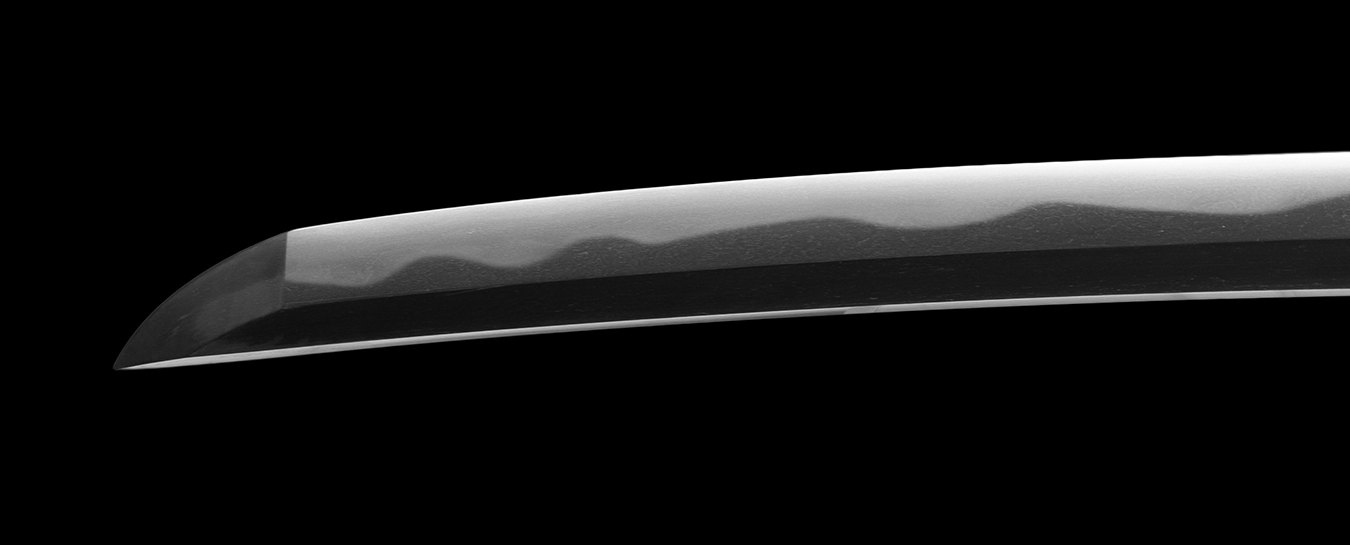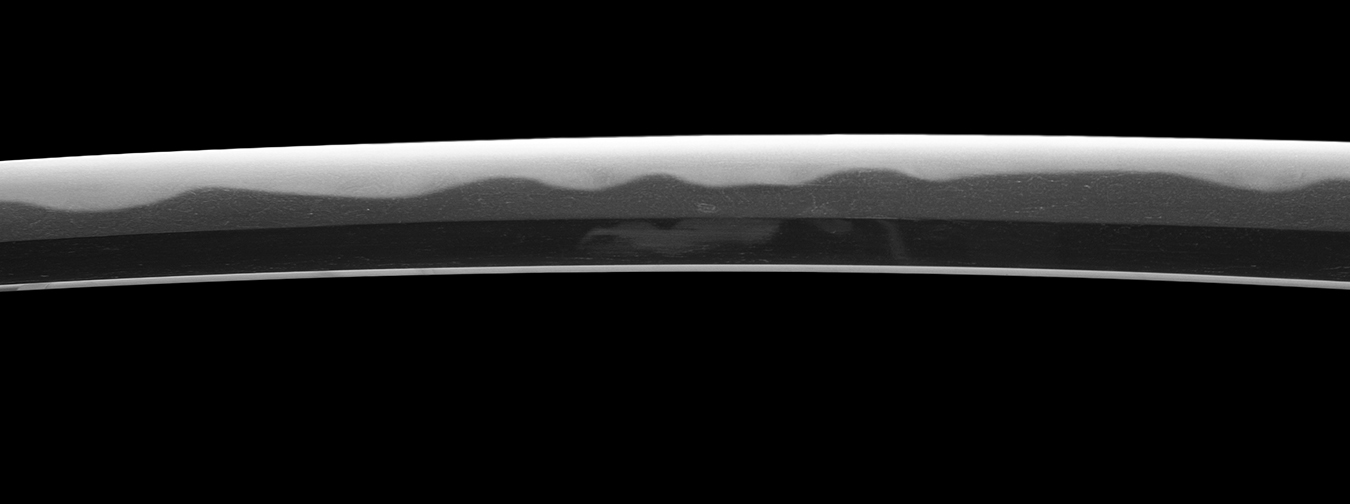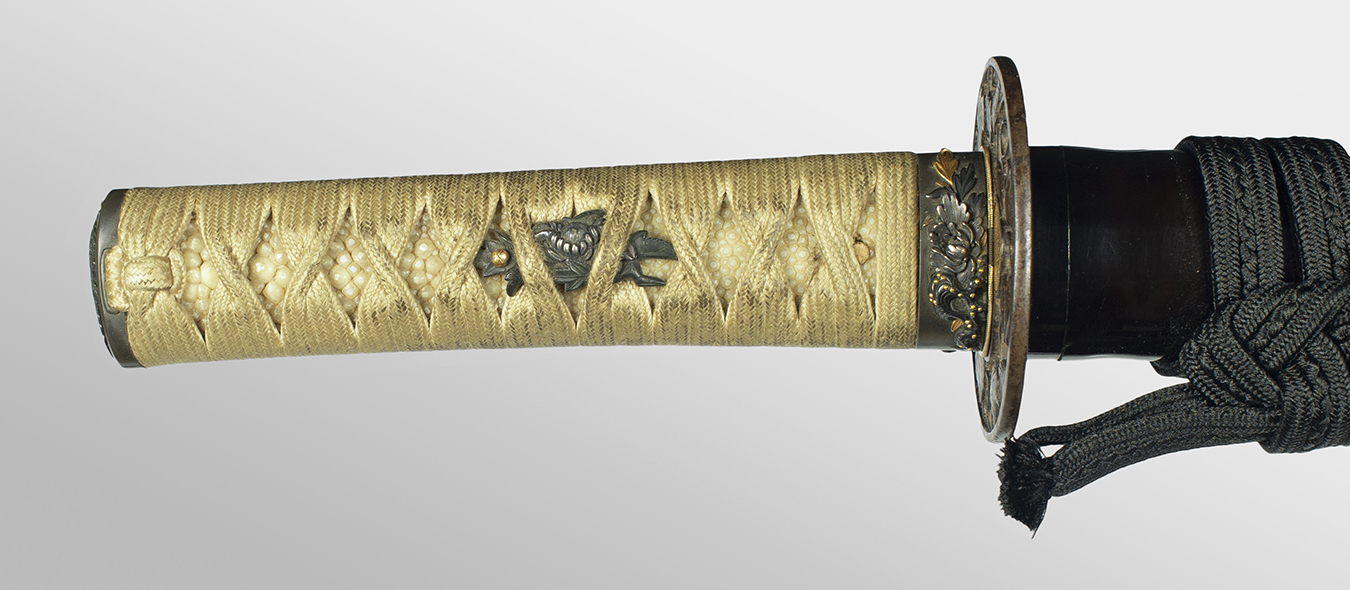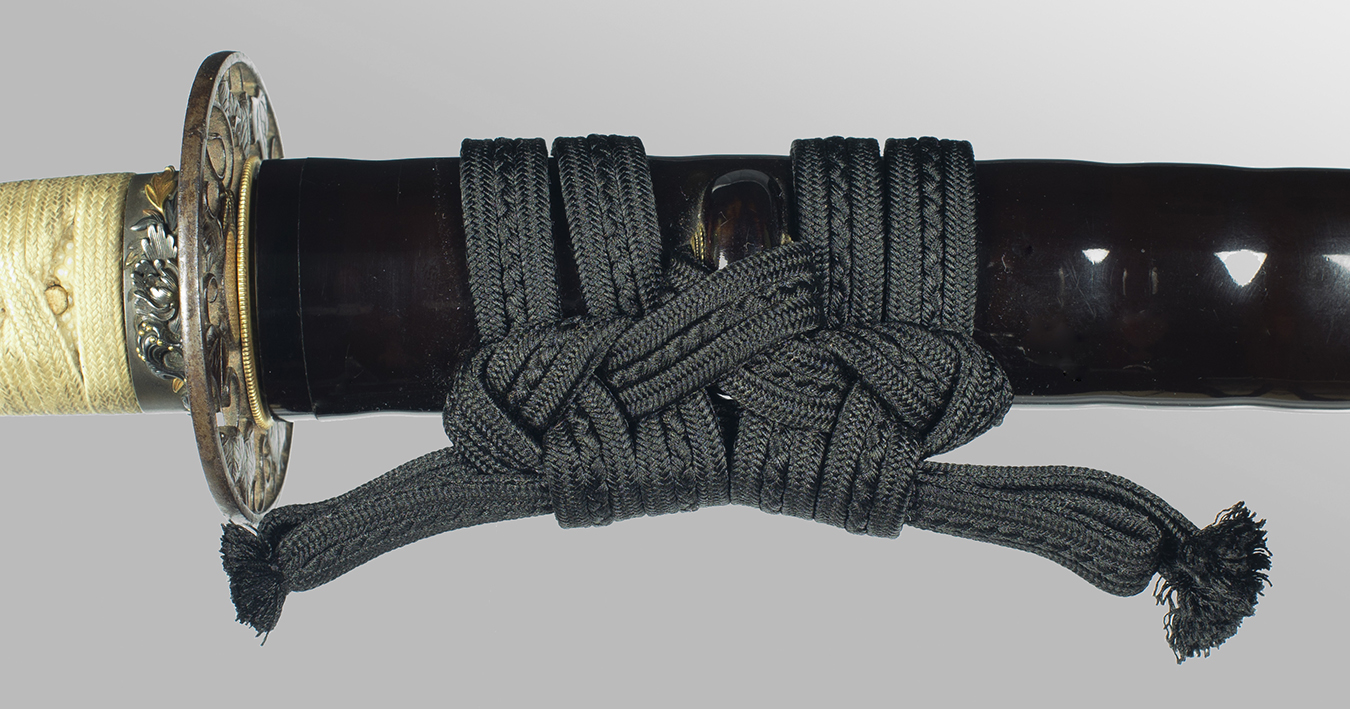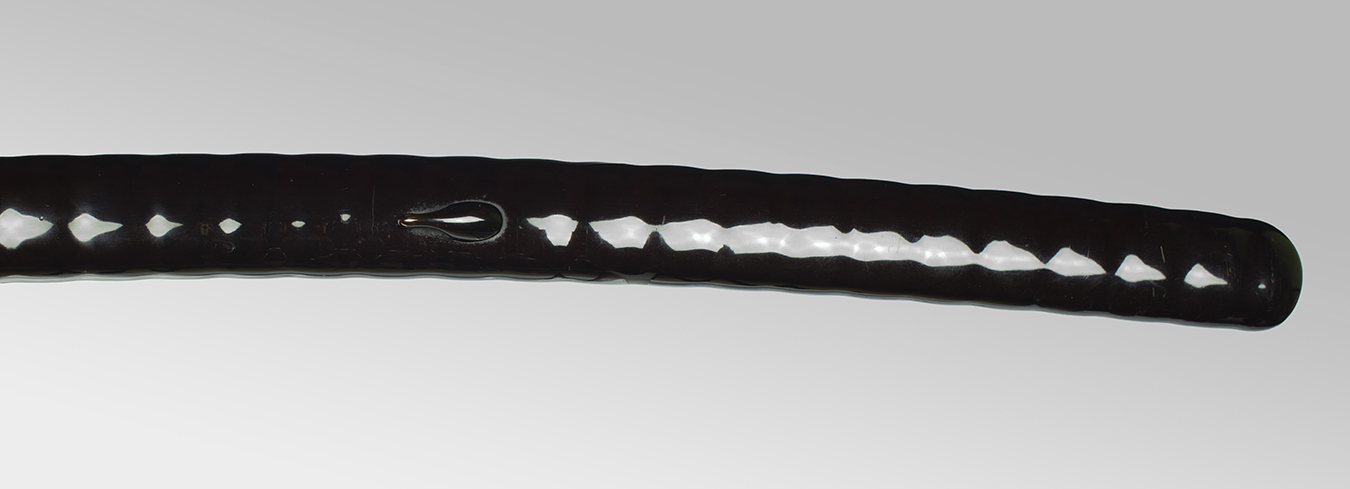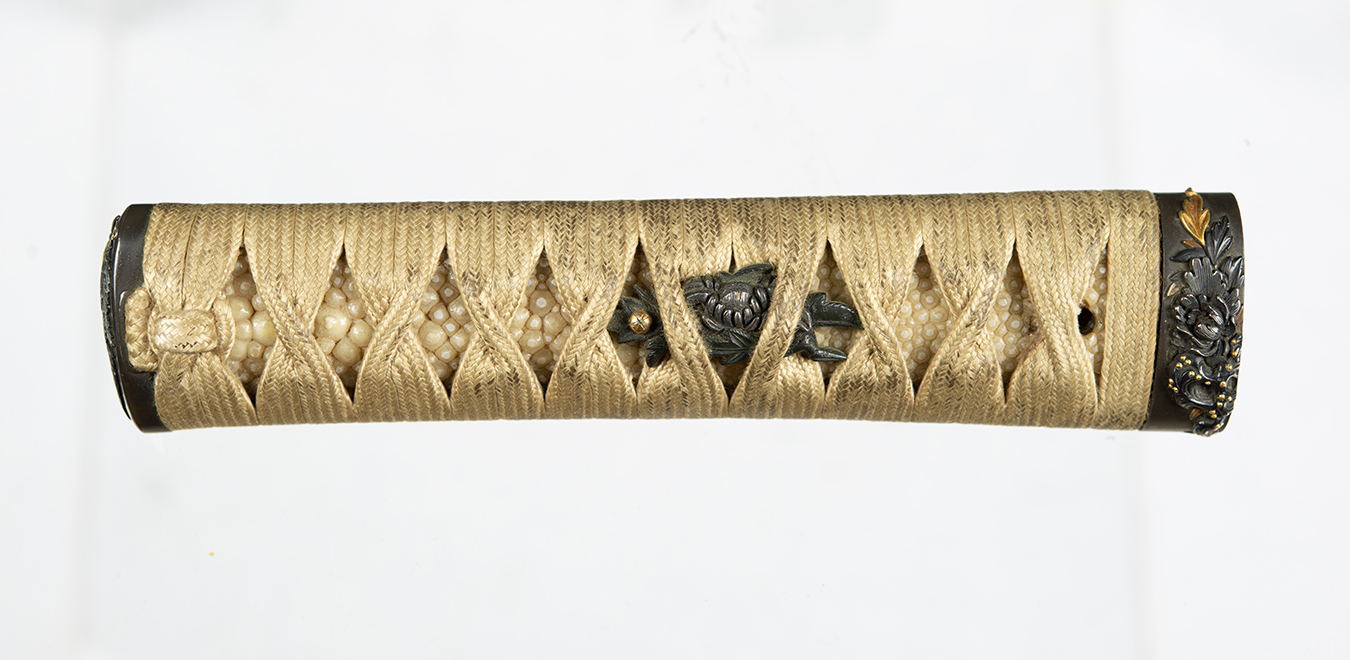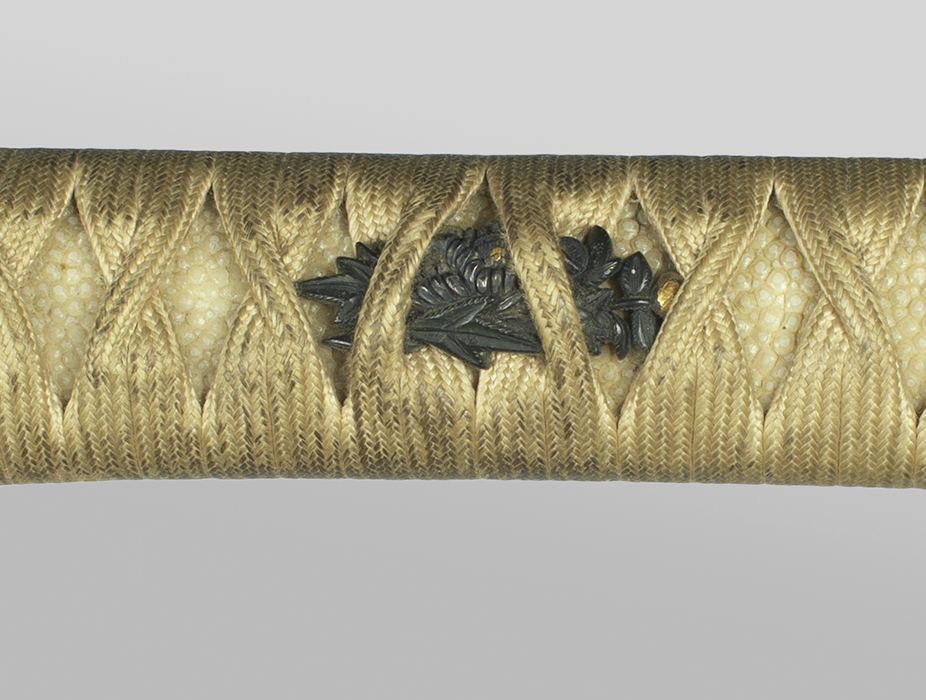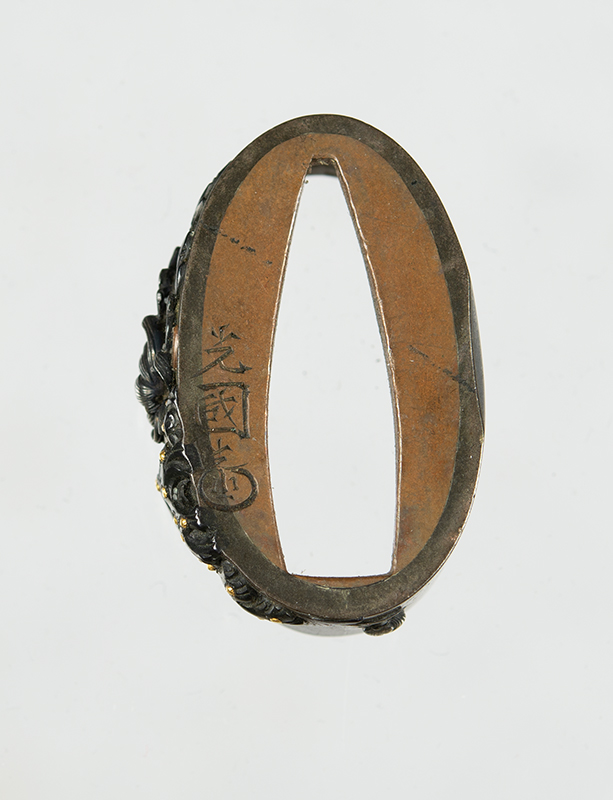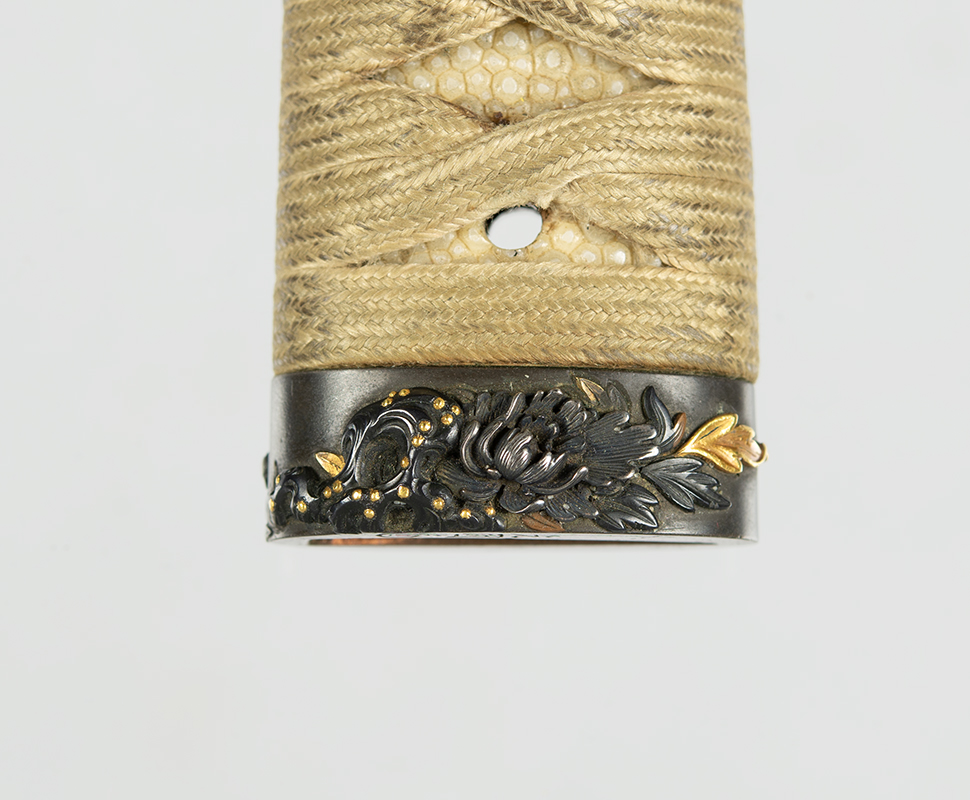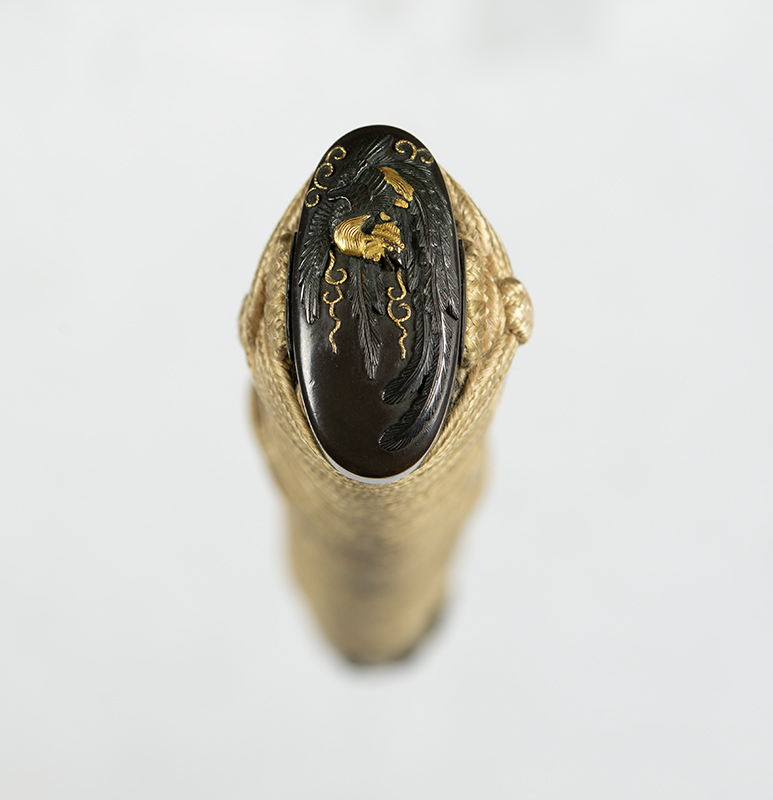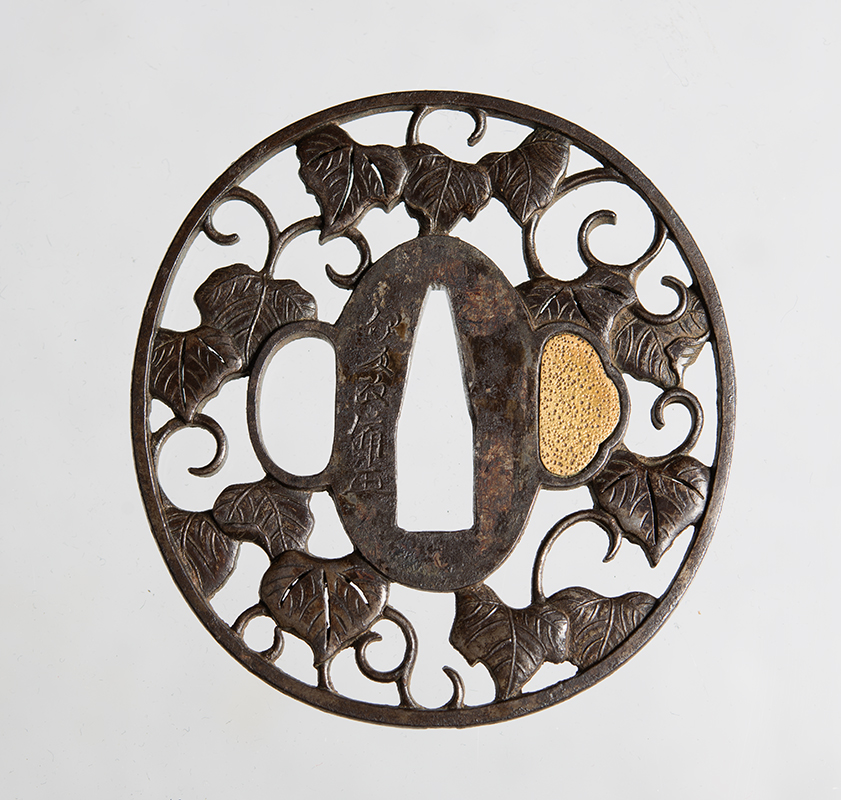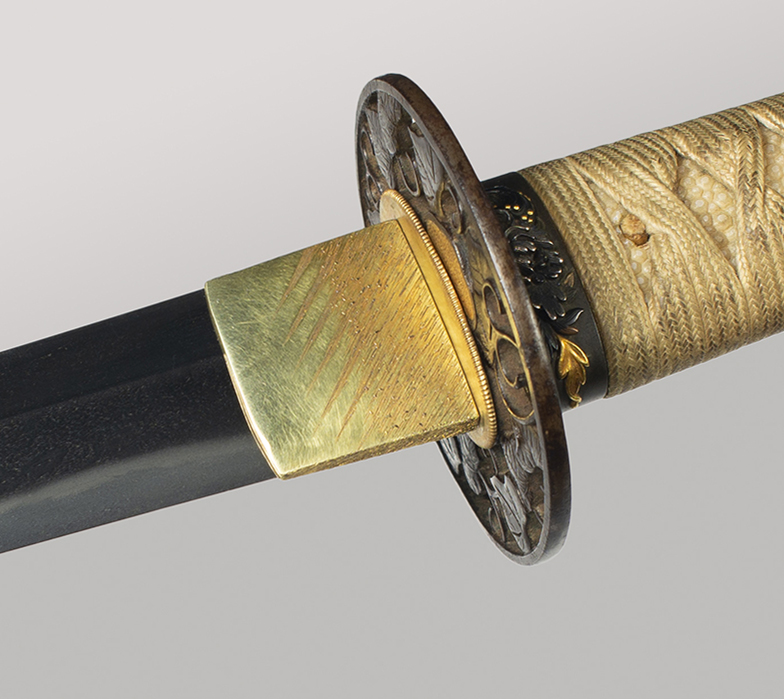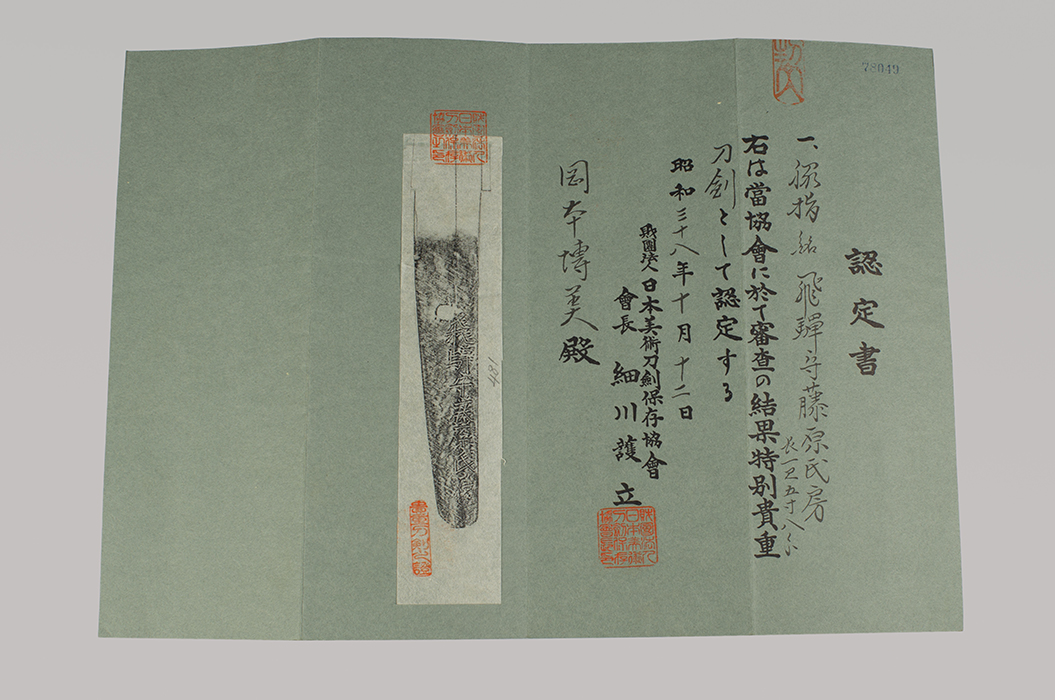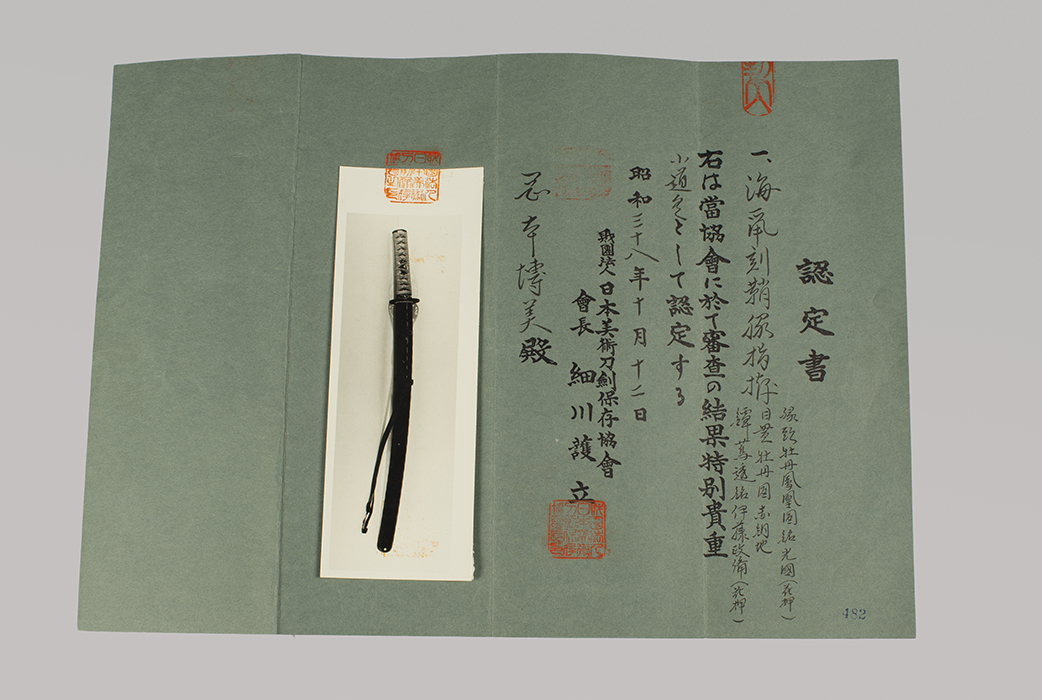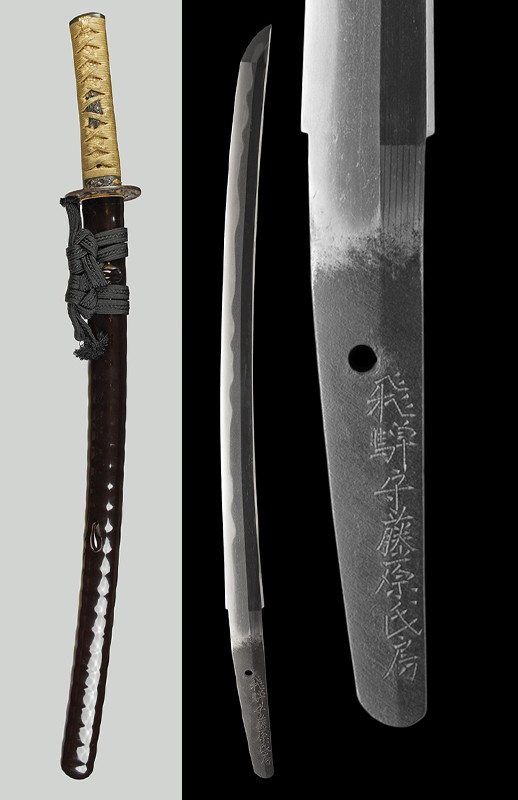|
| |||||||||||||||||||||||||||||||||||||||||||||||
Hamon : Nie-deki gunome midare with hako(box)gunome mixed in. The nioi guchi is bright and thick. The hamon begins in a gentle notare yakidashi and becomes gradually wider through the length of the blade. Kinsuji and inazuma are present and especially active in the monouchi. There are fine sunagashi and ashi.
Boshi : Midare-komi with inazuma and a long kaeri.
Kitae : Itame hada with mokume. Misty ji-nie and ko-nie can be seen covering the ji. There is tobiyaki on the shinogi-ji, on both sides of the blade. The shinogi-ji shows clear masame hada.
About this sword : A wakizashi by Hida no Kami Ujifusa. He was the son of Wakasa no Kami Ujifusa and became one of the Owari San Saku. These are the three famous smiths of Owari and include Hida no Kami Ujifusa, Sagami no Kami Masatsune and Hoki no Kami Nobutaka. He was born in 1567 and became a page of Oda Nobutaka, one of Oda Nobunaga's sons, in 1577. Ujifusa became a ronin after the seppuku of Oda Nobutaka in 1583. At this time he became a sword smith and was taught by his father, Wakasa no Kami Ujifusa. Ujifusa studied under the Shodai Nobutaka after the death of his father. He received his title of "Hida no Kami" in 1592. Nagoya castle was completed in 1610 and Hida no Kami Ujifusa moved there at that time. He remained at Nagaoya for the rest of his career and retired in 1631. He is a highly regarded smith. Ranked at Jo Saku by Fujishiro, valued at 5 million yen in the Toko Taikan and listed as Wazamono by the Yamada family.
This blade is in nice old polish and there are no kizu.
This blade and its koshirae were both submitted to the NBTHK for shinsa in 1963. Both of these papers were issued to the same Japanese owner as recorded on each papers. From this we can know that this sword had not left Japan after the war and this koshirae has not been touched or altered in modern times. The current owner acquired this from a Japanese collection where it had been carefully preserved. Please note the nearly perfect condition of the urushi and the intact old tsuka-maki. An unrestored "ubu" koshirae in this condition is seldom seen.
The fittings that accompany this koshirae are as follows: Shibuichi fuchi kashira of a peony and ho-o (phoenix) by Mitsukuni and signed "Mitsukuni (Kao)". These are finely carved takabori with details in shakudo and gold. Mitsukuni is ranked at the 5th level by Wakayama. He was from the Abe family and worked in both Kyoto and Edo around 1750. This zaimei set is an important example of Mitsukuni's work. The menuki are shakudo with gold highlights of a floral spray with a peony. The tsuba is a Bushu Ito school work by Masanari. It is iron with sukashi of aoi (hollyhock) leaves. Some of the leaves have ito sukashi for the veins. It is signed "Ito Masanari (Kao)". The kozuka is shakudo nanako with a floral motif in gold and shakudo. The kozuka blade is signed "Hida no Kami fujiwara Ujifusa" matching the maker of the sword. The overall condition of this koshirae is excellent. At a recent show in the US, it was noted that in this room full of hundreds of swords there were only a small handful, perhaps 4, blades with their original unaltered Edo period koshirae. This wakizashi should continue to be carefully preserved in this regard.
A Jo saku wakizashi by Hida no Kami Unjifusa, one of the Owari San Saku. Ubu, one mekugiana and signed. With an original Edo period koshirae and matching NBTHK papers for both from 1963. A wonderful opportunity indeed.
SOLD






